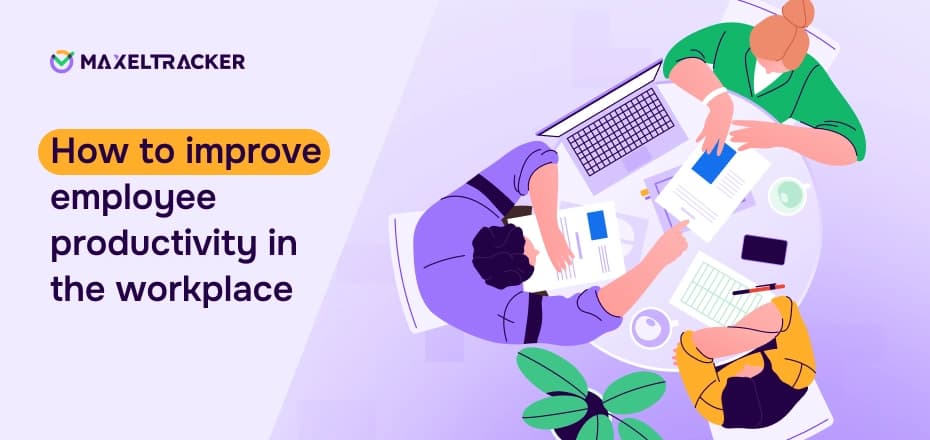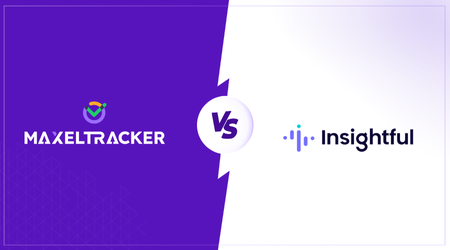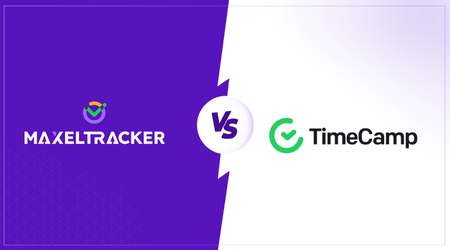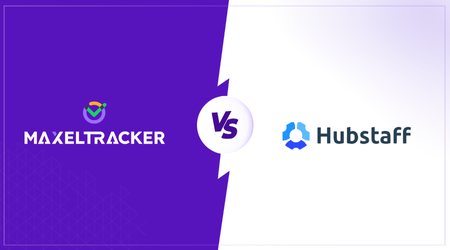

Remote work is no longer a trend—it's the new norm. Businesses now need clear, efficient ways to track productivity without micromanaging. When employees work from home, traditional supervision is gone. Results, communication, and task completion must now speak louder than desk presence.
In this guide, we’ll show how to track remote employee productivity using smart systems and ethical practices. You’ll learn how to set clear goals, choose the right tools, focus on results, and ensure employees stay engaged—without turning into a surveillance machine.
If you want to improve performance, reduce wasted time, and support your team from anywhere, this guide is for you.
Remote employee monitoring refers to the use of digital tools and software to observe, analyze, and understand how employees work outside the traditional office environment. It enables businesses to track productivity, ensure data security, and promote accountability—all within defined policy boundaries.
As remote work becomes a permanent part of the modern workplace, companies of all sizes—from startups to Fortune 100 enterprises—are turning to remote monitoring solutions to maintain performance standards and uphold compliance protocols.
With the help of remote employee monitoring software, organizations can:
Track work hours and task progress: Monitor time spent on projects, websites visited, and apps used to gain insight into daily workflows.
Evaluate team productivity: Identify trends, detect inefficiencies, and uncover areas where support may be needed.
Enhance data security: Detect potential risks and protect sensitive company information from unauthorized access or breaches.
Encourage employee growth: Use data to highlight where training or additional resources could boost performance.
To successfully manage a remote workforce, businesses need thoughtful strategies and the right tools to boost productivity. Implementing clear monitoring policies alongside digital solutions is key to overcoming the challenges of remote work and maintaining productivity.
Employee monitoring software plays a central role in tracking performance, safeguarding sensitive data, and improving overall efficiency. These tools provide real-time insights into how work hours are spent, which applications are used, and how engaged employees are throughout the day.
While it's important to respect privacy, these systems offer valuable visibility into work patterns, helping employers make informed decisions, support team productivity, and maintain accountability across remote setups.
These tools can monitor various activities—including keystrokes, app and website usage, call logs, and even screenshots. But the purpose isn’t to intrude on an employee’s privacy—it’s to support productivity, security, and organizational alignment. Here's what the right productivity monitoring software helps businesses achieve:
Promote a transparent and focused work culture: Align employee activity with organizational expectations and goals.
Boost operational efficiency: Use real-time data to provide meaningful feedback and optimize resource allocation.
Overcome remote work challenges: Help teams stay on track, engaged, and accountable—no matter where they’re working from.
Enhance data security: Detect and prevent unauthorized access or suspicious activity before it becomes a threat.
In short, Employee Productivity Tracking Software offers a balance between performance and protection. It gives businesses the visibility they need to make informed decisions while ensuring their remote teams stay productive, secure, and connected—regardless of location or schedule.
Employee productivity tracking software helps businesses monitor how employees spend their work hours—including breaks, overtime, and idle time. These tools provide a clear view of workload distribution, project progress, and whether team members need additional support or performance coaching.
Based on company policies, Remote Employee Monitoring may be required to log their time throughout the day, including breaks, meetings, and any idle periods. This level of detail ensures transparency, accurate time records, and fair compensation.
One of the key advantages of time trackers is the ability to quickly assess how employees manage their time—identifying those who stay on task, those who may be disengaged, and those at risk of burnout. It also helps foster accountability without micromanagement.
Additionally, productivity monitoring data can improve payroll and billing processes by generating precise timesheets and work logs, making it a valuable asset for both HR and finance teams.
Task and project management tools are essential for tracking remote employee productivity and ensuring seamless collaboration across teams. These platforms, often accessible via web and mobile apps, create a centralized workspace where everyone stays informed, aligned, and accountable—no matter where they are.
With project management software, teams can:
Assign tasks and set clear deadlines: Define responsibilities and ensure accountability.
Track progress in real-time: Gain visibility into individual and team performance.
Centralize all project information: Keep documents, updates, and communication in one place.
Optimize workflows: Integrate tools like time tracking, file sharing, and reporting features.
Improve communication: Enable quick feedback, updates, and adjustments.
By using these tools, businesses can overcome remote work challenges, boost transparency, and maintain momentum across all projects.
In a remote work environment, regular check-ins are more than a formality—they’re a critical touchpoint for engagement, alignment, and support. Whether held daily, weekly, or monthly, these conversations provide structured opportunities for managers and employees to stay connected.
Consistent check-ins help:
Review project progress: Address tasks in motion and tackle any blockers.
Offer support: Understand employee needs and guide them through challenges.
Set clear expectations: Align on goals, timelines, and responsibilities.
Celebrate wins: Recognize achievements to keep morale high.
Build team connection: Strengthen relationships and foster a sense of belonging.
When managers make time for regular conversations, it signals trust, encourages openness, and contributes to a more productive and motivated remote team.
Tracking employee activity and interactions within Teams, Slack, and similar communication platforms is key to managing remote teams, where digital communication drives collaboration and progress.
With thoughtful monitoring, organizations gain insights into:
Team dynamics – Understand collaboration patterns and interaction styles.
Communication clarity – Identify gaps or inefficiencies in daily conversations.
Workflow bottlenecks – Spot delays and improve coordination.
Time usage – Review how communication time is distributed across projects.
Monitoring includes evaluating the frequency, quality, and relevance of discussions to ensure they align with project goals and support an intentional work culture. It also helps identify when teams may need short breaks to reset before diving into focused project phases.
By analyzing messaging patterns, cross-team collaboration, and even platform downtimes, companies can make informed decisions on task allocation, timing, and team support.
Establishing clear communication guidelines and expectations for responsiveness helps drive the productive use of these platforms. When done mindfully, monitoring these tools supports transparency, accountability, and performance—without overstepping boundaries.
Remote employee monitoring offers organizations a powerful way to understand productivity, improve processes, and safeguard operations. By gathering insights into how employees manage their time, interact with tools, and engage with tasks, companies can make data-driven decisions that improve performance, enhance security, and support employee well-being.
Monitoring remote employees provides managers with a clear view of how time and resources are used outside a traditional office setting. By tracking task completion rates, active hours, and project timelines, leaders can better understand individual and team productivity.
This data helps remote manager tailor their support, address bottlenecks, and align efforts with business goals. The simple awareness that work habits are being reviewed also encourages employees to stay focused and deliver results. In turn, this creates a culture of accountability and productivity across the organization.
Monitoring tools offer detailed insights into how work gets done—highlighting inefficient workflows, outdated tools, and repetitive manual tasks. With this information, companies can:
Eliminate unnecessary steps
Automate repetitive tasks
Allocate resources more effectively
These optimizations help streamline operations, improve turnaround times, and deliver better outcomes across departments. Real-time monitoring also supports quicker adjustments when priorities shift, keeping the organization agile and aligned with market demands.
As remote teams work from various locations and networks, maintaining data security becomes more complex. Monitoring tools give organizations greater control by tracking:
File access and transfers
App usage and download activity
User permissions and login behavior
By detecting unusual activity early—like unauthorized access or suspicious downloads—companies can act quickly to prevent data breaches or policy violations. These systems also help enforce compliance with data protection standards and internal protocols, minimizing risk across distributed teams.
Whether accidental or intentional, data leaks can be costly. Remote monitoring adds a layer of protection by tracking how sensitive information moves across platforms.
Organizations can monitor file sharing, database access, and email usage in real-time, flagging any suspicious behavior that could lead to data loss. This oversight helps IT teams investigate issues early, contain threats quickly, and ensure sensitive data stays protected—wherever the employee is working from.
It also reinforces compliance with regulations, building trust with clients and stakeholders who rely on the secure handling of information.
Remote work can sometimes mask employee frustration, burnout, or disengagement. Monitoring helps identify changes in behavior—like decreased activity, irregular hours, or communication gaps—that may indicate an employee is struggling.
By addressing these early warning signs, remote managers can step in with timely support, offer clearer direction, or recognize hard work before dissatisfaction grows. This proactive approach improves job satisfaction, strengthens employee retention, and contributes to a healthier, more motivated work environment.
Choosing the right remote employee monitoring software can make a significant difference in how effectively you manage a distributed team. The right tool should support both managers and employees—offering clear visibility into work patterns without being intrusive.
To strike the right balance, focus on features that promote productivity, accountability, and flexibility. Here are the key capabilities to look for:
Accurate time tracking is essential for understanding how work hours are spent and ensuring accountability across your remote workforce. MaxelTracker includes:
Automated time logging – Tracks active hours automatically
Start and end time visibility – See when users begin and finish their day
Idle time detection – Identifies periods of inactivity to reflect true working hours
Real-time attendance – Know who’s active, idle, or offline in real-time
These features help to calculate employee productivity, supporting fair evaluations, and enabling better planning.
MaxelTracker offers automated time tracking, which works silently in the background to capture working hours without manual input. It eliminates the risk of missed entries and provides a consistent view of employee activity.
Managing leaves and attendance is simpler with MaxelTracker. It helps HR and team leads by:
Tracking user activity throughout the day
Maintaining daily activity records for each user
Providing clear timelines of when users were active, inactive, or away
This allows for quick attendance reviews and better workforce planning.
MaxelTracker gives managers visibility into work patterns and employee productivity without being intrusive.
Automatic screenshots – Capture screens at set intervals
Blur sensitive data – Optional blur feature maintains confidentiality
Contextual capture – Detects which app is in use during screenshot capture
This feature ensures accountability while being mindful of user privacy.
App usage logs – Track which apps employees use and for how long
Browser activity – See which websites are accessed and how frequently
These insights help identify distractions or productivity blockers and support better decision-making around tools and workflows.
MaxelTracker automatically detects idle periods based on system inactivity. It analyzes the absence of mouse or keyboard activity to help managers understand:
When employees are taking breaks
Periods of low engagement or possible distractions
This data helps foster better work habits and supports balanced productivity.
With built-in geo-tracking, MaxelTracker shows where your team is working from in real time. It’s particularly useful for remote, hybrid, or distributed teams, offering location-based context to activity data.
Department-wise analytics – View productivity metrics by department for a clearer organizational picture
Role-based access control – Grant tailored views to employees and managers so that data is seen only by the right people
This structure keeps data secure while enabling relevant insights for performance tracking.
MaxelTracker is a smart employee productivity platform designed to help HR teams and managers maintain visibility, boost accountability, and support team performance—no matter where employees are working from.
Here’s how MaxelTracker helps you effectively manage your remote, hybrid working, or in-office teams:
App and website usage monitoring MaxelTracker records which applications and websites employees access during work hours. This provides a clear picture of where time is spent, helping managers identify distractions and promote better work habits.
Smart screenshot capture Automatically captures screenshots with optional blur filters to maintain confidentiality. This feature detects which app is in use, offering deeper context into employee activity without being invasive.
Idle time detection Identify periods of inactivity with smart idle tracking based on keyboard and mouse usage. Understand work patterns and detect productivity gaps.
Department-wise analytics View productivity trends by department to pinpoint areas for improvement or recognize high-performing teams. These insights support better team-level decision-making.
Role-based access control Ensure each team member only views data relevant to their role. Managers and HR can access broad reports, while individual employees can view their own logs and progress.
Automated time tracking and attendance Track work hours automatically, including active, idle, and offline time. See start and end times and daily activity logs without manual input.
Real-time attendance view Know who is online, idle, or away at any given time. This feature is especially useful for managing distributed teams across different time zones.
Geo location tracking Monitor where your team is working from, whether they’re remote, hybrid, or office-based. Adds a layer of transparency and context to daily activity.
Remote work success isn’t left to chance—it’s shaped by how intentionally a team is supported. Productivity, focus, and accountability stem from more than trust alone; they rely on visibility, consistency, and the right systems in place. While distractions and disconnects are common, they can be addressed through clear communication, well-defined routines, and the use of employee productivity software. Platforms like MaxelTracker equip HR teams and managers with the insights needed to understand work patterns, identify employee performance gaps early, and provide timely support. By prioritizing outcomes and employee well-being over control, organizations can build a culture of motivation and sustained performance, regardless of where work happens.
👉 Sign up now at MaxelTracker.com and start transforming your team’s productivity today! 🚀
👉 Explore our pricing plans and features to find the perfect solution for your team’s productivity needs! 🚀
Related Blogs

Insightful Alternatives & Competitors
Looking for an alternative to Insightful that offers a more tailored approach to workforce productivity and employee monitoring? We’ve got you covered.

Timecamp Alternatives & Competitors
MaxelTracker is an all-in-one workforce management platform that goes beyond project and task tracking. Monitor real-time activity, track attendance, and gain actionable productivity insights, all in one place.

Hubstaff Alternatives & Competitors
Your time tracking software serves as the control center for your team’s productivity. If it's lacking key features, like GPS tracking for mobile teams or other essential tools, it becomes difficult to manage performance effectively.